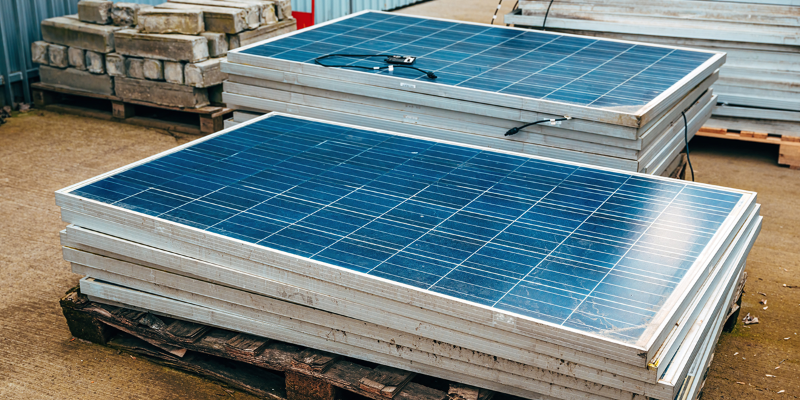Solar Recycling: A Burden or Opportunity?

Solar is the fastest-growing resource on the U.S. grid, adding 54% of new generation capacity in 2023. Across 22 states, solar generated more than 5% of the electricity, with California, Nevada and Massachusetts deploying the most solar as a percentage of their total statewide generation, according to the National Renewable Energy Laboratory.
“This rapid growth in solar photovoltaic (PV) power generation is relatively recent, even though solar PV and other forms of solar energy have been in use for decades,” CFC Energy Industry Analyst Alisha Pinto said. “With the changes in the solar energy industry have come improvements in the efficiency, module performance and average lifetime of the systems.”
The average lifetime of solar modules is about 20 to 30 years. Solar modules also have performance warranties, such as a guarantee of 90% production after 10 years and 80% after 25 years.
“There are two options for panels at the end of their life: landfill or recycle,” Pinto said. “However, in the U.S., solar recycling capabilities are very limited. Only about 10% of the panels being retired today are recycled since the U.S. market is so nascent. There are only two recyclers that recover high-purity bulk and trace materials, and they operate at a relatively small scale.”
The majority of panels are sent to landfills due to the cost to recycle them. The cost of recycling modules ranges from $15 to $45 per module. Disposing of modules in a landfill can cost about $1 to $5 each, depending on whether the landfill is a nonhazardous or hazardous waste landfill, with the latter being more expensive.
“There is also limited and inconsistent policy guidance on disposing of modules across states,” Pinto said. “Washington, New Jersey, North Carolina and California have laws or regulations that address solar module recycling. At a higher level, a lack of public information about recycling, complex regulations and insufficient support for research and development have held back the industry.”
More than 85% of the module is made of materials that are recyclable. Aluminum and glass are commonly recycled. However, there are other high-value materials that are not being recycled at scale including silicon, silver, copper and indium.
SOURCE: IRENA and IEA-PVPS (2016), “End-of-Life Management: Solar Photovoltaic Panels,” International Renewable Energy Agency and International Energy Agency Photovoltaic Power Systems.
A majority of solar PV systems in the U.S. have been installed since 2017. Anticipated large-scale panel retirements could begin around 2030, making a strong case for investments in recycling facilities. By 2030 there will be an estimated 1 million tons of panels coming offline or retiring. By 2050 there will be about 54 to 60 million tons of module waste globally and 7.5 million tons in the U.S. according to the International Renewable Energy Agency.
SOURCE: Mirletz, H., Hieslmair, H., Ovaitt, S. et al. Unfounded concerns about photovoltaic module toxicity and waste are slowing decarbonization. Nat. Phys. 19, 1376–1378 (2023).
With the growth of utility-scale solar, policy and investments can shift the current landscape of end-of-life management. In July 2024, the U.S. Department of Energy announced $20 million to fund research, development and potential commercialization of projects. The aim is to create approaches to increase the reuse and recycling of solar technologies through cost-effective recovery, new and advanced technologies and manufacturing processes.
“There are several potential environmental and economic drivers and benefits to mainstreaming solar module recycling,” Pinto said. “Recycling can help keep toxic waste out of landfills and recovered materials can reduce future manufacturing costs.”
The high-value materials can be used to manufacture new modules or be sold on commodity or secondary markets for use in other manufacturing processes.
“If some of these materials can be recovered at scale, it can prevent resource constraints and supply chain issues in the future,” Pinto said. “At the same time, there is potential for job creation with new industries and markets.”
